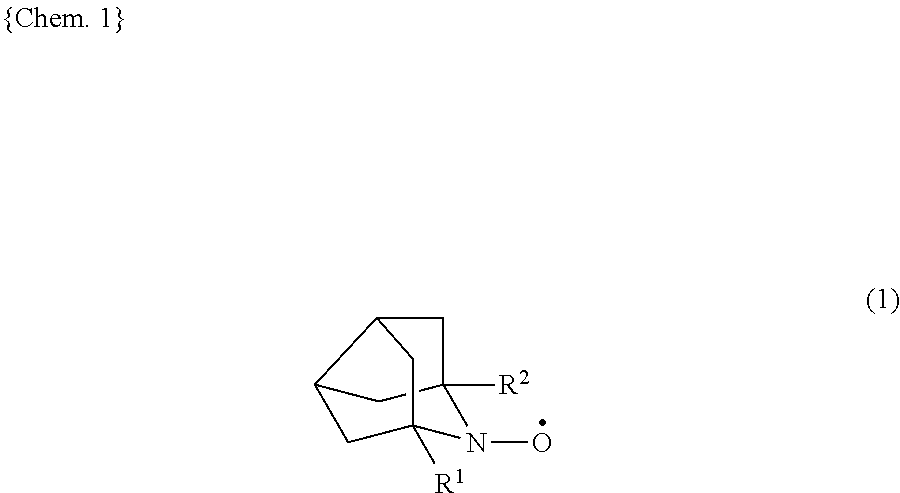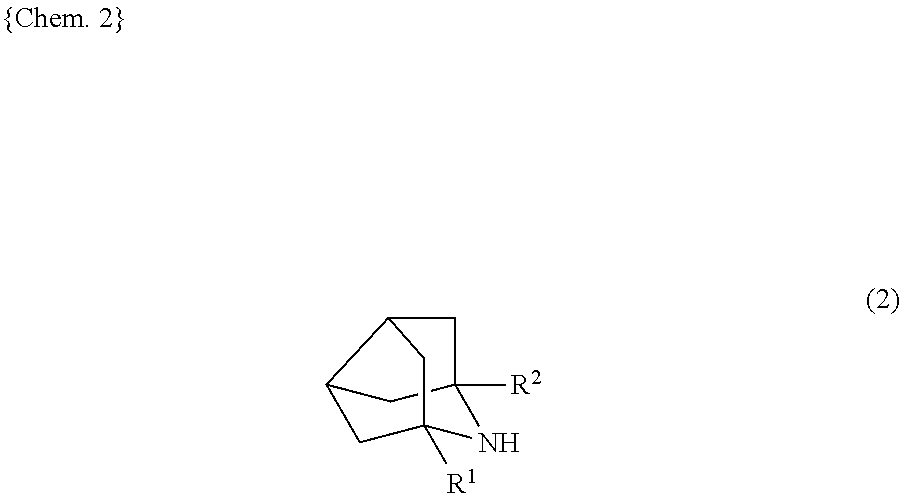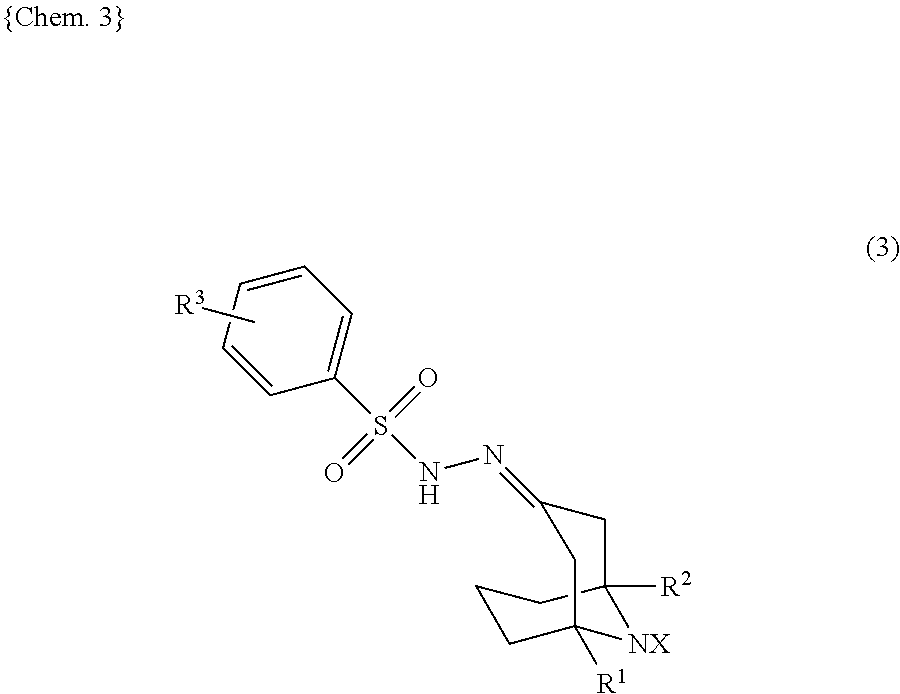9-azanoradamantane n-oxyl compound and method for producing same, and organic oxidation catalyst and method for oxidizing alcohols using 9-azanoradamantane n-oxyl compound
a technology of azanoradamantane and n-oxyl compounds, which is applied in the field of 9-azanoradamantane n-oxyl compounds, organic oxidation catalysts, and methods for oxidizing alcohols using 9-azanoradamantane n-oxyl compounds, to achieve the effects of less catalytic amounts, shorter reaction time, and higher selectivity
- Summary
- Abstract
- Description
- Claims
- Application Information
AI Technical Summary
Benefits of technology
Problems solved by technology
Method used
Image
Examples
example 1
Synthesis Method of Compound Represented by Formula (1) with R1=R2=Me (1,5-dimethyl-9-azanoradamantane N-oxyl, hereinafter, “DMN-AZADO”)
example 1-1
Synthesis of Heptane-2,6-dione
[0073]
[0074]N,O-Dimethylhydroxylamine hydrochloride (42 g, 431 mmol) was added to a dichloromethane (500 ml) solution of glutaryl chloride (25 ml, 196 mmol) at room temperature, and pyridine (95 ml, 1.18 mol) was dropped under ice-cooled condition. After being stirred at room temperature for 2 hours, the reaction mixture was celite filtered. The filtrate was concentrated under reduced pressure, and diethyl ether (300 ml) was added. The mixture was celite filtered again, and concentrated under reduced pressure to give a Weinreb diamide product. The Weinreb diamide product was dissolved in tetrahydrofuran (500 ml), and a 3 M diethyl ether solution (160 ml, 0.470 mol) methylmagnesium bromide was slowly dropped under ice-cooled condition. After being stirred at room temperature for 4 hours, the mixture was brought back to ice-cooled condition, and water was slowly added. After extraction with ethyl acetate, the reaction liquid was washed with saturated brin...
example 1-2
Synthesis of 1,5-Dimethyl-9-azabicyclo[3.3.1]nonan-3-one
[0076]
[0077]An aqueous solution (32 ml) of heptane-2,6-dione (4.96 g, 38.7 mmol) and acetonedicarboxylic acid (10.74 g, 73.5 mmol) was injected into a sealed tube, and 27 M KOH (6 ml), an ammonium chloride (6.20 g, 116 mmol) aqueous solution (60 ml), and sodium acetate (3.81 g, 46.4 mmol) were added in order under ice-cooled condition. The mixture was then brought to pH 9 with a 1 g / ml KOH aqueous solution. The reaction liquid was stirred inside the sealed tube in the dark at room temperature for 3 days. A 10% hydrochloric acid aqueous solution was slowly dropped until the carbon dioxide gas generation went to completion, and the mixture was washed with dichloromethane. After a separation procedure, the aqueous layer was brought to basic pH with a 10% sodium hydroxide aqueous solution, and extracted with dichloromethane. The organic layer was dried over potassium carbonate, concentrated under reduced pressure, and purified by s...
PUM
| Property | Measurement | Unit |
|---|---|---|
| mol % | aaaaa | aaaaa |
| temperature | aaaaa | aaaaa |
| temperature | aaaaa | aaaaa |
Abstract
Description
Claims
Application Information
 Login to View More
Login to View More - R&D
- Intellectual Property
- Life Sciences
- Materials
- Tech Scout
- Unparalleled Data Quality
- Higher Quality Content
- 60% Fewer Hallucinations
Browse by: Latest US Patents, China's latest patents, Technical Efficacy Thesaurus, Application Domain, Technology Topic, Popular Technical Reports.
© 2025 PatSnap. All rights reserved.Legal|Privacy policy|Modern Slavery Act Transparency Statement|Sitemap|About US| Contact US: help@patsnap.com



